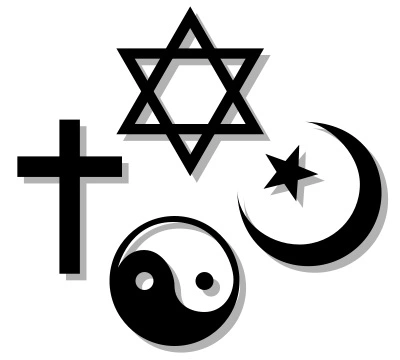Celtic religion
Publié le 22/02/2012
Extrait du document

The religion of the people who
lived in France and Britain at the time of the Roman
conquest. The Romans called the Celts Galli, in
English, Gauls.
The Celts spoke a language related to German,
Latin, Greek, Persian, and even Sanskrit, the classical
language of India. Many people have noticed
intriguing similarities between Celtic and ancient
Indian culture. These include similarities in religion
and mythology.
At fi rst the Celts lived east of the Rhine River.
About 1000 B.C.E. they crossed the Rhine into the
area of modern France. By 300 B.C.E. they also
lived across the English Channel. Their descendants
include the Scots, Irish, and Welsh. In 279
B.C.E. some Celts sacked the Greek oracle at Delphi.
Then they crossed into modern Turkey and
founded a state called Galatia (cf. the NEW TESTAMENT
book of Galatians).
Celtic religion is diffi cult to reconstruct.
Ancient writers, especially Julius Caesar, described
it, but they described it in terms of their own religions.
They also emphasized Celtic brutality. That
emphasis is often not reliable. Later Christians,
especially in Ireland, preserved Celtic stories and
other elements of Celtic culture. But it is often diffi -
cult to tell what is ancient Celtic and what is more
recent and Christian. Archaeology and ancient
inscriptions provide some help.
According to Julius Caesar the Celts worshipped
several gods that the more savage Germanic
peoples did not; these corresponded to the
Roman Mercury (the most important Celtic god),
APOLLO, MARS, JUPITER, and Minerva. It is not clear
what were the Celtic names of the gods Caesar had
in mind. The most important Celtic god seems to
have been Lugh, also spelled Lugus, a god of technology
and invention. The names of several European
cities preserve his memory: Lyon and Laon in
France and Leiden in the Netherlands. A fascinating
image of the Celtic god Cernunnos resembles
the Hindu god SIVA. It also resembles a seated fi gure
from a seal of the Indus Valley Civilization (see
INDUS VALLEY RELIGION). An important Celtic GODDESS
was Epona. She was associated with horses.
Other Celtic goddesses gave their names to rivers
in Europe. One example is the Rhine.
Much Celtic religious activity centered on places
in nature, such as groves of trees, high places, and
bodies of water. Later folklore recalls these sacred
places in stories of fairies. Archaeologists have
recovered Celtic offerings from bodies of water.
Caesar stressed that the Celts practiced SACRIFICE,
especially human sacrifi ce. Indeed, he
described a RITUAL in which the Celts built a human
fi gure out of wicker, fi lled it with people, and set
it on fi re, burning the occupants. Many scholars
have doubts about his account. It is worth noting
that some famous prehistoric monuments in Britain,
such as the passage tomb at Newgrange, Ireland,
and the megaliths at Stonehenge, England,
were not built and used by the Celts. They were
built and used by earlier peoples.
The Celts had priests called DRUIDS. The Druids
preserved the oral traditions of the people, served
as judges, conducted religious rituals, and divined.
According to Irish traditions, the Celts divided the
year into two equal parts. The most important festival,
Samain, took place on October 31/November
1. (Like the Jewish day, the Celtic day began
at sundown.) The festival of Beltine occurred on
April 30/May 1. These festivals are the ancestors
of Halloween and May Day, respectively.
Liens utiles
- Relationship between religion, spirituality, and young Lebanese university students’ well-being.
- : En quoi ce passage est-il une parodie des romans de chevalerie et une satire de la religion ?
- ANTHROPOLOGIE POLITIQUE ET SOCIALE. THEME : LE MOUVEMENT ALMORAVIDE ENTRE ECONOMIE ET RELIGION.
- Ethique appendice du livre I de Spinoza: déterminisme et religion
- dissertation philo science et religion: Pourquoi le développement scientifique n'a-t-il pas fait disparaître les religions ?































